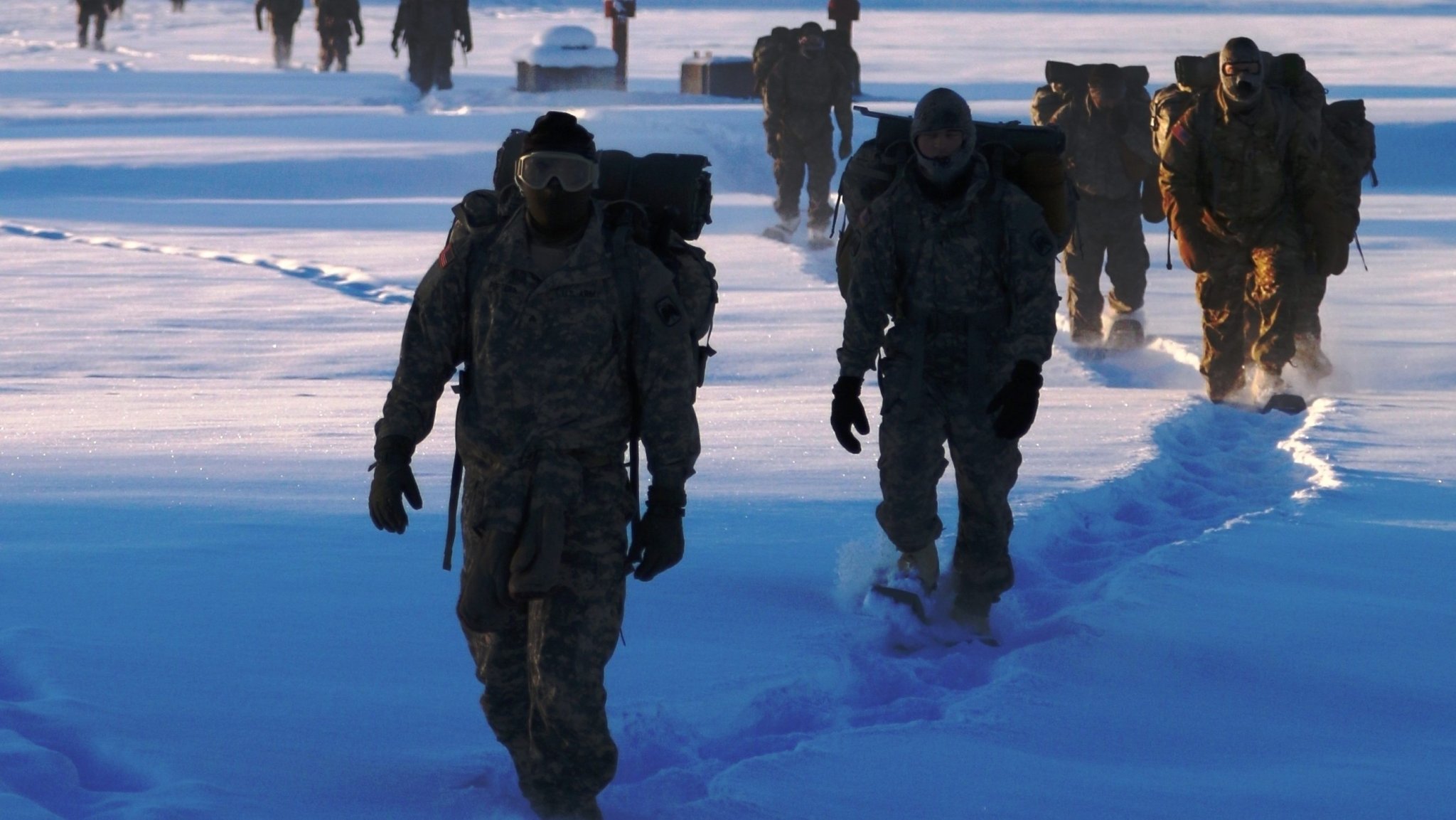

To fight the arctic cold of winters at the Army’s most northern base, officials at Fort Wainwright in Fairbanks, Alaska want to dig deep underground — but need help from local Alaskans to figure out where.
The Army Office of Energy Initiatives announced it had contracted with Teverra, a geothermal energy company, to determine the feasibility of pulling heat from deep underground to during winter months, when temperatures on the base often fall below negative-40 Fahrenheit. The first step in the project, the Army said, is to ask nearby landowners to use their already-in-place wells to check the temperatures far below the surface.
“Teverra needs to measure the temperature at numerous locations deep underground, and they are asking for the public’s help in allowing access to extremely deep wells for temperature measuring,” said Eve A. Baker, spokesperson for Fort Wainwright.
Wainwright is home to elements of the 11th Airborne Division — which also has units at Joint Base Elmendorf-Richardson near Anchorage — as well as the Northern Warfare Training Center and Army Cold Regions Test Center. The Army considers the two centers as key spots for developmental testing and training as the service focuses on cold weather conflicts.
The company will need to measure deep subsurface temperatures in local wells, which Wainwright does not have. The company used Public data from the Alaska Department of Natural Resources to identify multiple wells deeper than 500 feet that are off-post, Army officials said.
Teverra will be reaching out to well owners by mail, phone, and in-person visits to ask for permission to lower temperature probes into wells on their land. There will be no construction, digging, or modifications made to private property, officials said.
Subscribe to Task & Purpose today. Get the latest military news and culture in your inbox daily.
The project is one of several plans to bring geothermal energy to military installations across the country in support federal energy targets. Federal law requires all DOD installations to obtain at least 99.9% “energy resilience” by 2030.
There are seven installations in Alaska, Nevada, California, Idaho, and Texas with ongoing geothermal projects, according to an April release from Defense Innovation Unit. Feasibility studies and tests can take up to two years to complete.
Geothermal energy is a renewable source of energy that uses heat within the earth. The heat is produced by the slow decay of radioactive particles in the earth’s core.
“Geothermal sources strengthen our energy grids and give us the ability to isolate threats before they impact our operations,” Dr. Ravi Chaudhary, Assistant Secretary of the Air Force for Energy, Installations, and Environment said in a DIU release about the initiative.
Geo-exchange systems can bring down energy consumption and emissions by more than 40% compared to air source heat pumps and by over 70% compared to electric resistance heating with standard air-conditioning equipment, according to the Army.
The latest on Task & Purpose
- Here are the ships the U.S. plans to sink in the Pacific this summer
- USS John Basilone, warship named for legendary Marine, delivered to the Navy
- Army graduates first class of recruiting warrant officers
- Navy fires captain of ship that ran aground in Africa
- Do I have to go to my IRR muster duty event?
